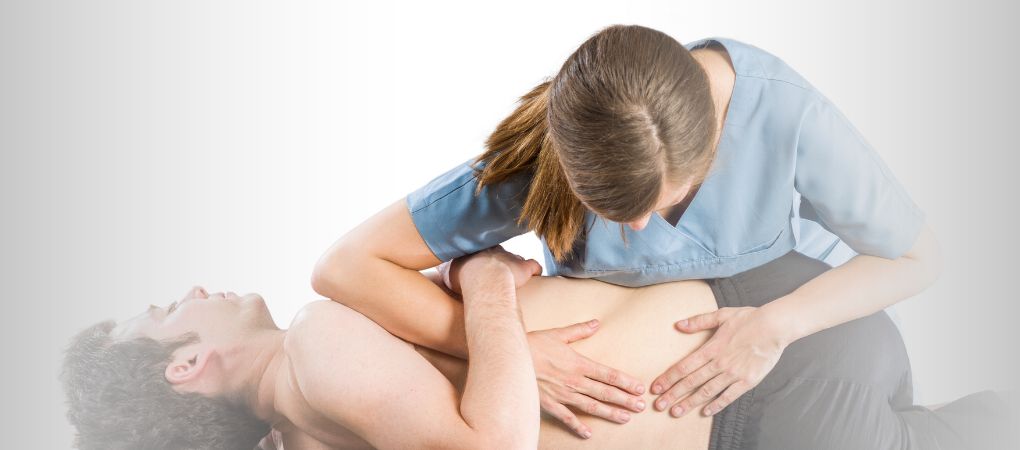Francesca Galiano
|
20/09/2023 - Last update 09/11/2023
Laura L. Snyder, Shaun C. Knox, Charles J. Smutny | Year 2020
Integrating Osteopathic Manipulative Treatment and Injections in the Diagnosis and Management of a Hip Labral Tear
Pathology:
Hip disfunctions
Type of study:
Case Report
Date of publication of the study’:
2020/Jun/01

Purpose of the study
- Objective: to show the usefullness of the osteopathic approach in the diagnosis of a case of hip labral tear and in the management of related symptoms
- Measured outcomes: evaluation of the symptoms
Participants
- Number: 1
- Description: man, 74 years old. Generalized pain in the right hip – particularly severe over the right greater trochanter – and back for 6 weeks, which began during a cardiac rehabilitation program. Medical history of coronary artery disease, with bypass surgery 4 months before the current visit, and degenerative disc disease.
Physical examination showed decreased hip extension on the right hand side, hypertonicity of the iliopsoas muscle, and tenderness on palpation over the greater trochanter, thus leading to the treatment of trochanteric bursitis and psoas syndrome with OMT.
On subsequent visits, the patient showed pain on the right side of the groin reproducible by palpation over the right transverse processes of L2-3. In addition, imaging (X-Ray and MRI) led to ruling out causes such as osteoarthritis, any trauma involving bones, or tendinopathy given the presence of good joint space and minimal degeneration. However, the MRI showed a possible hip labral tear.
Interventions and evaluations
- Evaluation of the symptoms at baseline, after each treatment and at the follow-up.
- 4 visits, the 2dn and the 3rd 4 weeks after the previous one and the 4th 8 weeks after the 3rd.
- OMT at the first 2 visits and injections at the first three.
- OMT: muscle energy and direct inhibition techniques, particularly on the psoas.
- Injection:
- in the bursa of the greater trochanter with 4 mL of 1% lidocaine and 8 mg dexamethasone.
- paravertebral block with 4 mL of 1% lidocaine and 5 mg dexamethasone.
- Intra-articular, guided by diagnostic ultrasonography, with 5 mL of 1% lidocaine
- In case of returning pain, intra-articular platelet-rich plasma.
- Exercises to be performed at home stretching and specifically concerning the gluteus medius.
Results
After OMT and first injection the range of motion (ROM) and hip pain improved, and so did the psoas hypertonicity. The patient also reported symptom relief in 3 out of 5 days by performing the exercises at home.
At the second visit, symptoms had returned, along with other lumbar and sacral dysfunctions and altered posture; OMT and a second injection produced pain reduction and postural improvement.
At the third visit, an ultrasound-guided injection eliminated the right hip pain, leading to the confirmation of the diagnosis of hip labral tear.
At the follow-up, 6 months later, the patient reported no pain.
Discussion
Patients with hip labral tear often report hip pain in the anterior part of the hip or in the groin, but only half of them experience pain radiating to the lateral hip, anterior thigh, or buttocks. Not to mention that these injuries can induce changes in gait, postural alterations, hip instability, and alterations in ROM. Thus, a comprehensive assessment of hip pain is needed to make a good diagnosis.
On the other hand, trochanteric bursitis can have similar symptoms. Its treatment is initially conservative and based on stretching, physiotherapy and nonsteroidal anti-inflammatory drugs, with corticosteroid injection. Psoas syndrome, on the other hand, because of the psoas’s ties to nearby fascial, muscular, and bony structures, can easily induce widespread pain and disability, complicating the diagnosis of low back and hip pain.
OMT has been shown to manage psoas syndrome, as well as low back pain, hip pain, ROM and postural problems. Similarly, paravertebral blocks and intra-articular injections can help desensitize nerve pathways and reduce pain, thus improving the consequences of a bursitis or psoas problems.
In such a situation, the diagnosis of hip labral tear must be conducted meticulously because physical examination is not particularly useful, as opposed to MRI, which has shown good diagnostic efficacy (especially magnetic resonance angiography). In the present study, ultrasound-guided intra-articular injection was chosen to confirm the diagnosis of hip labral tear, as the initial probability of this cause was low in the differential diagnosis analysis. In addition, this type of injection has 90% diagnostic accuracy compared with simple arthroscopy.
Hip labral tear also involves conservative treatment similar to trochanteric bursitis, for at least 10-12 weeks. However, pain tends to return. When this type of management of the problem fails, the surgical approach takes over. Because of his comorbidities, the choice was made not to subject the patient to such a surgery, but to recommend platelet-rich plasma injection instead.
This study thus showed how OMT and injections can assist traditional investigative systems to diagnose and manage a case of hip labral tear.
The review of Osteopedia
By Marco Chiera
Strengths: Good case presentation by flowchart; good discussion, set over a reasoning on differential diagnosis.
Limits: like any case report, it is difficult to generalize its results; It would have been preferable if both the osteopathic techniques performed and the exercises recommended to the patient had been described; from a therapeutic point of view it is unclear whether the OMT or the injections produced the positive effects on the patient.

Are you an osteopath?
Register and enjoy the membership benefits. Create your public profile and publish your studies. It's free!
Register now
School or training institution?
Register and enjoy the membership benefits. Create your public profile and publish your studies. It's free!
Register now
Do you want to become an osteopath? Are you a student?
Register and enjoy the membership benefits. Create your public profile and publish your studies. It's free!
Register now







